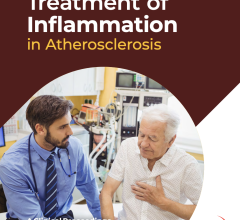
May 24, 2016 — In a new report, Ampronix looks at the rapid expansion of simulated procedures into medical education, including programs recently implemented for Baylor College and Tuoro University System.
Simulated procedures refers to anything that mimics reality, including fake cadavers and virtual reality. Ampronix said that instead of opting for virtual reality programs that are limited to single applications, it might be more advantageous to customize a virtual simulation education program
Synthetic cadavers have always posed an issue to physicians to-be because they’re nothing like the real thing. Even as researchers continue to make them seem more life-like, they still are inadequate for learning anatomy. From virtual dissection to simulated brain surgery, education and virtual reality finally converge.
According to Health Imaging, advances in radiological procedures have concretized it as a central aspect of patient care in modern medicine, but medical education in radiology — including tools and programs for it — have not progressed at a similar rate. The current discord among the two factors present an auspicious time for medical imaging education upgrades.
To fill this perceived gap, Marc H. Willis and colleagues from Baylor College of Medicine in Houston, Texas, have created an educational simulation portal that involves clinical decision support (CDS) at point-of-order, precise selection of medical images, safety measures and consideration of healthcare costs.
A study of the program from Academic Radiology suggests that adopting virtually simulated teaching methods in curricula can be beneficial after the 34 volunteer medical students that tested the program each saw an increase in test scores. Additionally, 85 percent of them believed the program should become part of the curriculum.
But that’s only one among several different approaches to simulated education that can be considered. Students at Touro University System’s osteopathic-medicine college in New York have been practicing dissection on holograms and cadavers since 2015.
Equipped with 3-D glasses and a stylus, the virtual-reality system they utilize, zSpace, allows students to perform 3-D surgeries. Similar to those at Baylor College, these students have also received better grades as well upon integrating the virtually simulated education. The immersive program combines a special display with software from Cyber-Anatomy, EchoPixel and NGrain for medical training.
As virtual simulations continue to become readily adopted, Ampronix said institutions seeking them need to consider what their educational gap they are trying to fill, what uses the new technology can provide for their organizations, and if these technological advancements are worth the investment.
For instance, combining a 3-D compatible display such as the 32-inch Panasonic Medical LCD with software such as Cyber-Anatomy, may allow users to benefit from 3-D simulated surgeries, among many other applications. These software solutions even provide assistance to create customized programs. The benefit to this is that the display can be used for a host of other procedures when not in use for 3-D simulations.
In a classroom setting, a professor utilizing this type of set-up can easily transition from showing a medical DICOM image, to a recorded surgery, before finally showing how the surgery is performed in real-life via v3-D simulation. With the large display, students and instructors both can both share the interactive process.
For more information: www.ampronix.com


 April 10, 2025
April 10, 2025 








